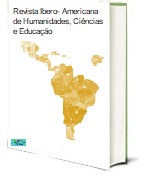THE IMPORTANCE OF JUMPING IN INFANT EDUCATION
DOI:
https://doi.org/10.51891/rease.v8i6.6092Keywords:
Childhood education. Ludicity. Jump. Learning.Abstract
Jumping is a form of learning in early childhood education. This work addresses and defends playfulness in education, mainly at the teaching level. I have the objective of understanding the importance of playfulness, our learning processes in children from 0 to 5 years old. For this, a research was carried out, using theoretical studies, including Ariès, Vygotsky Kishimoto, Huizinga, Almeida, Fantacholli and others. Among the many results of this research, it is clear that the ludicity must make part of the work, two methods and resources, two teachers. It is necessary to understand the influence of playfulness in early childhood education, to understand how a child learns through brincadeiras e jogos, and how it can favor their development. The ludic can be an important resource in learning, also influencing the affective, cognitive and social side of upbringing. I concluded that it is very important in the school environment and also for some students to develop a better affective and social coexistence, both with classmates and with family, school community and the entire society in general. A playful way of teaching is a possibility of learning practices, not one that can exist by upbringing and respecting the rules, by thinking and conquering autonomy.
Downloads
Downloads
Published
How to Cite
Issue
Section
Categories
License
Atribuição CC BY

